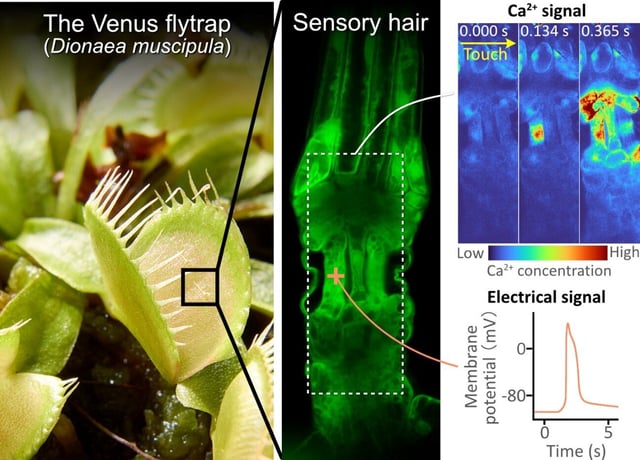Overview
- The study finds DmMSL10 concentrated at the base of sensory hairs where it detects very weak mechanical deflections.
- Bending a hair generates a receptor potential that, once past a threshold, triggers an all‑or‑none action potential with a propagating Ca2+ wave.
- Plants lacking DmMSL10 show only subthreshold electrical changes and local calcium signals, indicating a loss of signal amplification.
- In a lab ecosystem with freely walking ants, wild‑type traps produced more Ca2+ waves and closures than DmMSL10‑deficient plants.
- Researchers from Saitama University and NIBB report the findings in Nature Communications, building on prior work on stimulus counting and calcium‑based short‑term memory.



